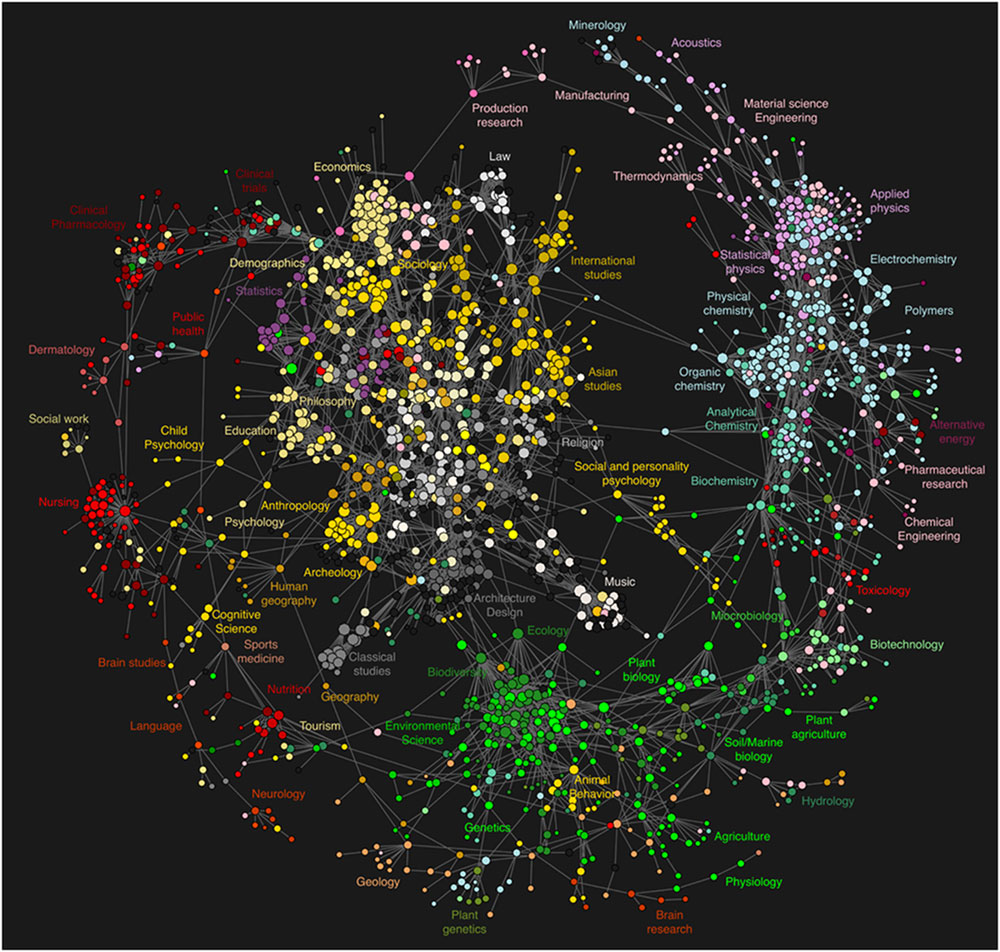![]()
Visual science
Knowledge Map
By NICHOLAS WADE
Published: March 16, 2009

Physics, light purple, Chemistry, blue,, biology, green, medicine, red, social sciences, yellow, humanities, white, mathematics purple, engineering, pink.
A new map of knowledge has been put toghether by scientists at the research library of the Los Alamos National Laboratory. It is based on electronic data searches in which users moved from one publication to another, establishing associations between them.
The map includes sciences and humanities, in a hub and wheel arrangement, with the humanities and the sciences in the center arranged around it. The arrangement came up naturally from the data and is not invented, said Johan Bollen, the leader of the research team.
On the map, published in the current edition of "PLoS One", publications are color coded as follows: physics, light purple, Chemistry, blue, biology, green, medicine, red, social sciences, yellow, humanities, white, mathematics, purple, engineering, pink. Interconnecting lines reflect the probability of a reader clicks of a publication to another on a computer screen.
Similar maps have been constructed based on footnotes in published articles that refer to articles in other magazines. Dr. Bollen believes that his map, click scholars represents the best electronic behavior "that makes the citation analysis, note how the method is called.
One reason is that footnotes are often added to a variety of social reasons, such as to flatter the commentators so one can improve his own citation count or impress colleagues with a range of reading. Clicks represent real scholars use information. In addition, clicks capture access to an article to use it for practical purposes, instead of just following the quote, Dr. Bollen said.
A reader can click on a publication
to another based on many other connections besides citations as a text search
or an e-mail message, Dr. Bollen said.
"What we have is a map of the world scientific activity," said Dr.
Bollen. He wants to make its data publicly available to scholars to evaluate
the impact of their or other items and the degree of influence of scientific
journals.